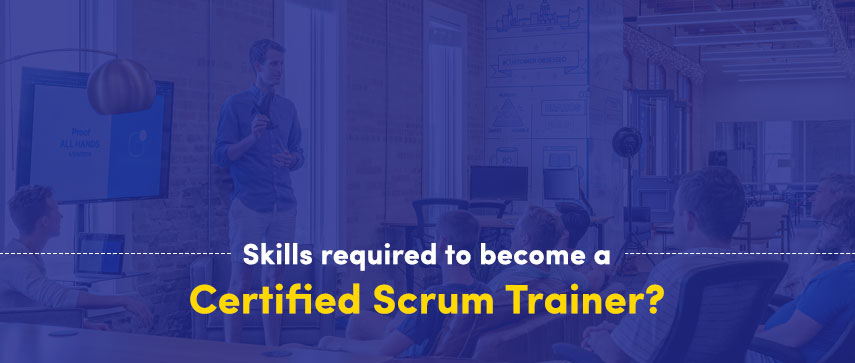
Naveen Kumar Singh
Naveen is a professional agile coach and has been working independently for a long time in the Asia... Read more
![]() Get Your AI-Enabled Scrum Master Certification for Just ₹1,500 (Save 85%)!
Get Your AI-Enabled Scrum Master Certification for Just ₹1,500 (Save 85%)!
Scrum.Org
SAFe®
ICAgile
Scrum Alliance
Technical Agility
Kanban
Business Analysis
Project Management
AI-Enabled
Agilemania Academy
Scrum.Org
SAFe®
ICAgile
Scrum Alliance
Technical Agility
Kanban
Business Analysis
Project Management
AI-Enabled

Naveen Kumar Singh
Naveen is a professional agile coach and has been working independently for a long time in the Asia... Read more

I receive many phone calls nowadays to learn how to become CST. I personally think that you must try to become CST if you want because there is a huge gap between demand and supply, especially in India. But do you really understand what all needed to become CST ? or you have just assumed that trainers are earning lots of money so you can earn as well? If it is all about money then you can earn the same money even without becoming a Certified Scrum Trainer by just facilitating training for other CSTs.
After all, you have to sell your classes also when you become CST so why not start selling other CST classes to earn money? And for this, you don’t need any certificate either. You just need to be a good business development professional and maintain a healthy relationship with a Certified Scrum Trainer.
Oh OK, so this blog is about how to become a Certified Scrum Trainer (CST) so I should focus on that. Here are some of the things that are needed as per my understanding after interacting with a few CST and CST aspirants.
Co-training with a Certified Scrum Trainer (CST) is not mandatory so don’t worry. Will come back to this later on. Now read carefully about below and be prepared to invest 1-3 years in the process of becoming CST. Commitment from you and continuous review of your work is required.
Step 1: Do you have real working knowledge as a Professional Scrum Master? If not then find a job as a Scrum Master to gain real experience. You can’t mock all real situations by just reading books or hearing EXPERTS at conferences.
Step 2: Since you have real Scrum experience become a Certified Scrum Professional (CSP) by meeting the criteria as laid down by Scrum Alliance. You need to earn some SEUs as well and you can earn SEUs free of cost.
Step 3: Start participating in Scrum communities either as a Speaker, Volunteer, or Attendee. Join Global Scrum Gathering, Regional Gathering, or User Groups. Start blogging about Scrum and your experience either through Scrum Alliance or your own blog site.
The idea is to create visibility to become a known face within a community so existing CST should not ignore you and your knowledge.
Step 4: Prepare your own training material like presentation, posters, student handbook, course outline, learning objective, and other stuff that is needed to deliver your Scrum Master workshop. Must be aligned with the Scrum Guide and also mapped with the learning objective. MUST BE YOUR CONTENT AND NOT COPIED FROM SOMEWHERE.
Step 5: Training experience without Co-training (as said earlier co-training is Optional). You must deliver 2-3 days of training on Scrum to 100 people (non-certification Scrum Master Training). This training can be internal or external but must be published with a learning objective. Minimum 10 batches needed. Try to facilitate your own public batches if you can reach out to training companies. Training companies always look for a good freelance trainer. Don’t forget to collect feedback forms because these feedback forms are needed as proof.
Step 6: Get your training sessions recorded and if possible then publish it somewhere like YouTube and let people watch and review. This is not just to demonstrate your training style and knowledge but also to help in creating visibility. Now come back to co-training. If you are done with the above and doing really well then reach out to existing CST with your profile, videos, and training materials and I am sure they will give you a co-training opportunity for sure. Even if not then at least document your communications so you can present to Scrum Alliance as evidence that you did try but didn’t get the opportunity for co-training.
Step 7: Submit your application to Scrum Alliance by paying FEE along with the required documents – signed a copy of the application, scrum experience, community experience, training material, and training experience.

OK, will you become a Certified Scrum Trainer by following the above steps? Maybe not but at least you can increase your chances to become a Certified Scrum Trainer. Hard work is needed and hard work is back. Best of luck and let me know if you feel I can add some value to your journey to become CST!
About me – I am an agile coach and CSD (Certified Scrum Developer) trainer and I like what I do so not thinking about becoming a Certified Scrum Trainer. When I think about becoming a professional Scrum Trainer I will definitely follow the above steps.
Naveen is a professional agile coach and has been working independently for a long time in the Asia Pacific. He works with the software development team and product team to develop awesome products based on empirical processes.
WhatsApp Us
We will get back to you soon!
For a detailed enquiry, please write to us at connect@agilemania.com


